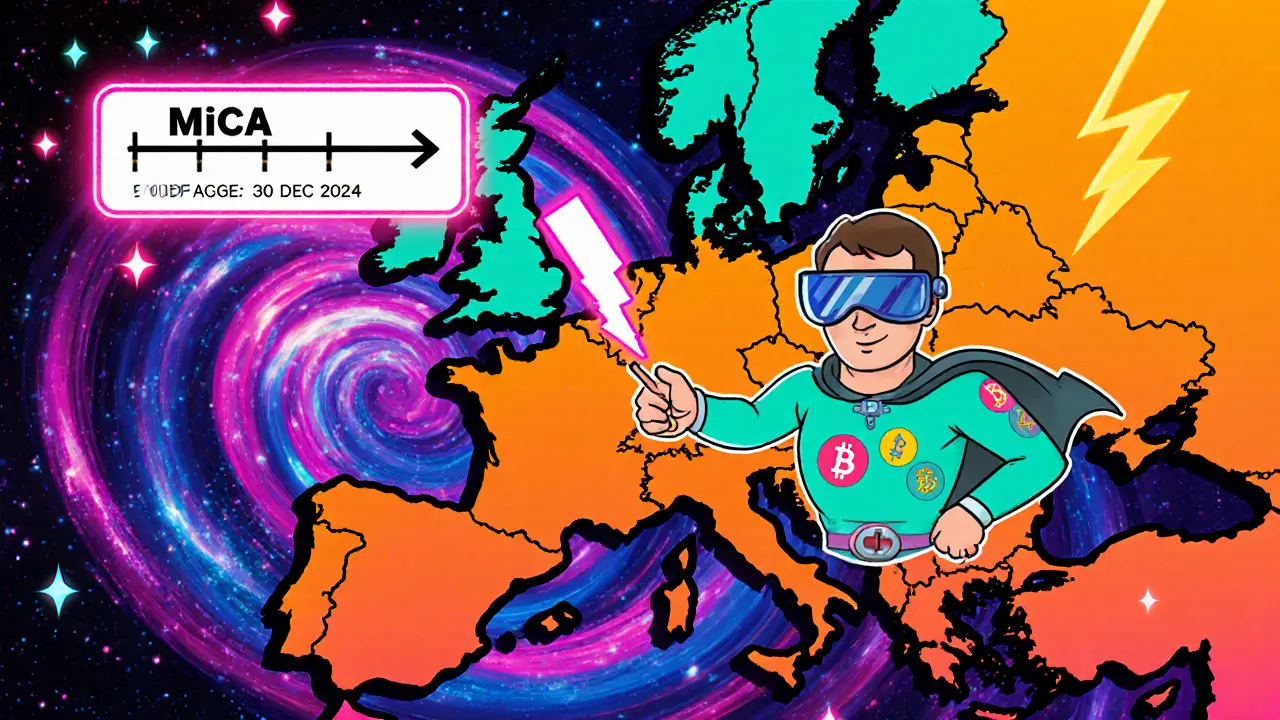EU Crypto Regulation: Rules, Compliance and Market Impact
When working with EU crypto regulation, the set of laws and guidelines governing digital assets across the European Union. Also known as European crypto framework, it shapes how exchanges, token issuers, wallets and miners operate in the region. The framework aims to protect investors, curb illicit finance and create a level playing field for innovators. As a result, every project that wants to launch a token, list on an EU‑based exchange or run a mining farm must map its activities to a handful of core rules. These rules include market‑standard licensing, anti‑money‑laundering (AML) checks, consumer‑fairness guarantees and environmental‑impact reporting. In short, EU crypto regulation is the backbone that connects policy, technology and market behavior across 27 member states.
One of the most visible pillars of this backbone is MiCAR, the Markets in Crypto‑Assets Regulation that defines how crypto‑assets are offered, traded and supervised in the EU. MiCAR encompasses token categories such as asset‑referenced tokens, e‑money tokens and utility tokens, and it requires providers to obtain a specific licence from national authorities. The regulation also sets a clear timeline for compliance, with most obligations kicking in by the end of 2024 and full enforcement by 2025. A key attribute of MiCAR is its focus on consumer protection: it mandates clear disclosure of token risks, limits on high‑leverage products, and strict advertising rules. For developers, MiCAR influences token design because it differentiates between securities‑like assets and pure utility tokens, shaping tokenomics and fundraising strategies. In practice, projects that ignore MiCAR risk being barred from EU markets, facing hefty fines, or being forced to re‑engineer their entire token structure.
Another critical piece of the puzzle is EU AML rules, the anti‑money‑laundering directives that apply to crypto‑service providers, exchanges and custodians. These rules require thorough customer due‑diligence, transaction monitoring, and reporting of suspicious activities to national Financial Intelligence Units. On top of AML, the EU has introduced specific crypto mining regulations, environmental and licensing standards that affect energy‑intensive mining operations. Together, AML and mining rules shape the operational overhead for any crypto business in Europe. For a trader, this means setting up KYC procedures, integrating compliance software, and keeping an eye on energy‑efficiency certifications if you run a mining rig. For an exchange, it means constantly updating AML screening lists, filing periodic reports, and staying aligned with both MiCAR and the broader EU digital asset framework. Understanding these interconnected pieces helps you build a compliant roadmap, avoid costly enforcement actions, and tap into the EU’s massive market of crypto‑savvy users. Below you’ll find a curated set of articles that break down each of these components, give you step‑by‑step compliance checklists, and show how the evolving regulatory landscape can create new opportunities for traders and innovators alike.
EU Crypto Business Transition Periods under MiCA Explained
Learn how EU crypto firms can navigate the varied MiCA transition periods, avoid missed deadlines, and secure full licensing for EU-wide passporting.
